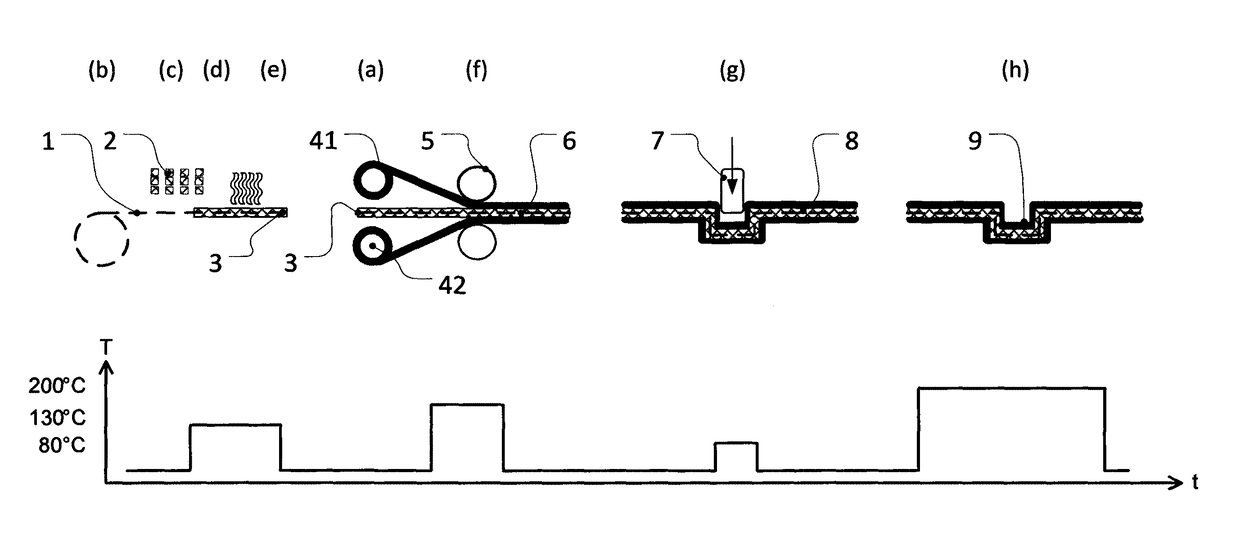Production of fibre composite component part based on aluminium and polyurethane
a technology of fibre composite components and polyurethane, which is applied in the direction of natural mineral layered products, synthetic resin layered products, adhesive types, etc., can solve the problems of inability to process laminates of this type, the thickness of steel, and the material science of manufacturing fibre composite component parts is accordingly much more difficult than the material science of producing component parts, so as to achieve the effect of high component strength
- Summary
- Abstract
- Description
- Claims
- Application Information
AI Technical Summary
Benefits of technology
Problems solved by technology
Method used
Image
Examples
examples
[0155]The following woven carbon fibre fabric was used as the textile fabric in all tests: Torayca FT 300 3K 200tex 200 g / m2 twill weave.
[0156]All the tests were carried out using aluminium sheets 0.18 mm in sheet thickness. Aluminium H 4S Temper 29 from Novelis of Göttingen was concerned.
[0157]The mixture used in Example 0, a comparative example not in accordance with the present invention, was a reactive polyurethane composition prepared as described in Example 2 of DE102011006163A1. The recipe is depicted in table 0.
[0158]The mixtures used for Inventive Examples 1 and 2 had recipes as per tables 1 and 2.
[0159]
TABLE 0Recipe of mixture for Comparative Example 0Comparative Example 0 (not in accordance with the present invention)Hardener (60%Uretdione65.3 wt %Evonikstrength)hardenerIndustries(Effective NCO: 7.7%Polyol 4640 (OHN 630Binder10.9 wt %Perstorpmg KOH / g molar mass360 g / mol liquidBenzoinDegassing agent 0.2 wt %AldrichButyl acetateSolvent23.6 wt %Fluka
[0160]
TABLE 1Recipe of mi...
PUM
| Property | Measurement | Unit |
|---|---|---|
| temperature | aaaaa | aaaaa |
| temperature | aaaaa | aaaaa |
| temperature | aaaaa | aaaaa |
Abstract
Description
Claims
Application Information
 Login to View More
Login to View More - R&D
- Intellectual Property
- Life Sciences
- Materials
- Tech Scout
- Unparalleled Data Quality
- Higher Quality Content
- 60% Fewer Hallucinations
Browse by: Latest US Patents, China's latest patents, Technical Efficacy Thesaurus, Application Domain, Technology Topic, Popular Technical Reports.
© 2025 PatSnap. All rights reserved.Legal|Privacy policy|Modern Slavery Act Transparency Statement|Sitemap|About US| Contact US: help@patsnap.com


